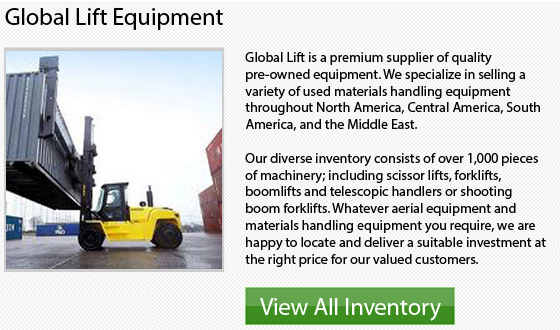
Even if sales volumes have normally been small, around 1% to 5% of the global forklift market; side-loaders have become the paramount choice of equipment in the material handling business for dealing with unusual cargo in a simple way.
Commonly, side-loaders are utilized in the timber, aluminum, steel, glass, aviation and construction industries. Moreover, they are used within industries that are producing unusual things including moldings, and windmill arms. Practically any industry that makes oversized long or awkward objects utilizes the side-loaders.
In the beginning of the 1950's, Henry Le Grande Lull from the Lull Manufacturing Company initially designed the sideloader forklift. These early models were requested from the US Air Force. The original idea was patented for commercial use but it was not made until Lull Manufacturing was taken over during 1959 by the Baker Raulang Company. It was Baker Raulang who put the design into production. Later, the name was changed to Baker Traveloader. During the latter part of the 1950s, the side-loaders were introduced to Europe. The early units were made by Italian manufacturer Fiora and the afterwards B-P Battioni e Pagani who pioneered the equipment's utilization in timber yards.
The side-loader is a bit different from the counterbalanced forklift, since the conventional forward-traveling lift trucks have front facing forks whilst the side-loader has side facing forks. The operator however will drive inside a cabin similar to those used in standard forklifts. The lifting, loading, and unloading functions are performed by the mast situated at the right-hand side of the driver. The load is normally transported lying on a metal or wooden deck. This helps to lessen stress, distortion and damage to the cargo. Recent innovations to the side-loader design have incorporated a huge range of lifting accessories being developed.
The use of side-loaders rather than the reach-stackers or traditional forklifts: safer operating conditions, better visibility, and the ability to utilize available space more efficiently as well as faster traveling speeds.
Only once you evaluate your work setting and kinds of applications you would be putting your equipment through, would you be able to precisely determine the best kind of equipment to complete your tasks. There are a few great rental options available too in order to know the right kind of machinery to meet all your needs. Doing some research online or talking to a respectable dealer is another good way to get some information as well when trying to know the best choice.